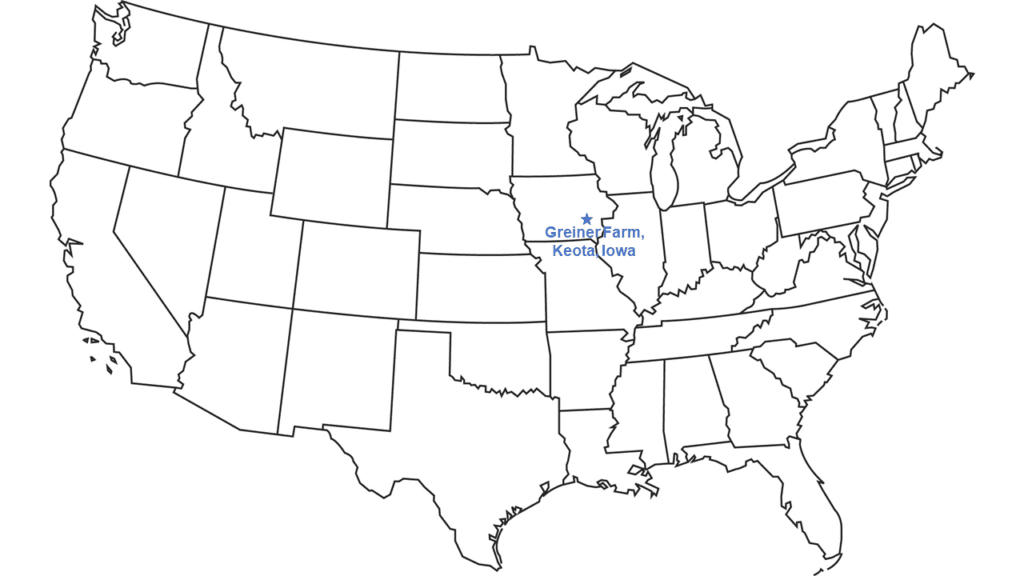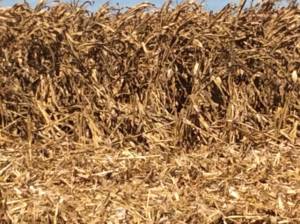
A very dry summer is shrinking our crop yields. Since July 1, we’ve only received about 4 cm, or 1.5 inches, of rain in our area of Iowa in the heart of the U.S. Midwest. The lack of rain, especially through August, moved the crop from starting to show drought stress to being in critical condition.
As we wait for crops to mature, yields are getting smaller, but prices are increasing a bit. That balance means the lack of rain isn’t all bad. Grain and oilseed stocks are high, but using some of those stocks could set us all up for better prices next year.
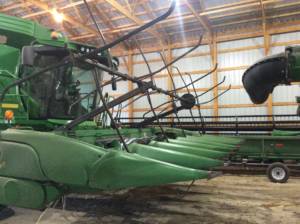
Though the crop is smaller than we had hoped, the corn is mature and nearly ready to harvest. My son Keaton and I spent the first week of September preparing our harvest equipment, grain dryer and storage system to make sure everything is working smoothly. I have Iowa Soybean Association meetings the second week of September. And then we expect to start picking corn after that, by the second weekend of September, when the moisture levels are reasonable.
We rely on rainfall in our region, rather than irrigation. Much of the rain that came in August came with a severe windstorm called a derecho, which had hurricane-force straight-line winds. We were on the edges of the storm, but we still have some corn that was blown down in that storm. The stalks still matured, but they are fragile, and ears can easily fall to the ground during harvest instead of being picked up by the combine. To address this problem, we added reels, attachment that will help gently pull the corn stalks into the combine head. This will be a very common problem for farmers in the Midwest this fall.
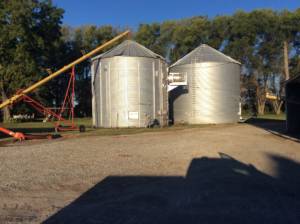
At the beginning of harvest, we dry our corn to an ideal moisture content, about 15%, ourselves. Drying the corn to this level allows us to store it as needed. We use a batch dryer that blows hot air on the corn from above in a grain bin. It holds a volume of about 42 kiloliters, or 1,200 bushels, at a time. This is a bottleneck for our corn harvest, and we may build a larger dryer next season. Usually we only need to dry corn for the first few weeks of harvest. Then it has dried out enough in the field that it will store well without additional handling.
Once the corn is ready to store, we keep it in our storage bins on our farm until we decide to sell it, sometime in the next year, depending on prices. However, we don’t have room to store all of our crops on the farm. So, we haul some corn from the field to either the local grain elevator for export or to the company we raise pigs for to make feed.
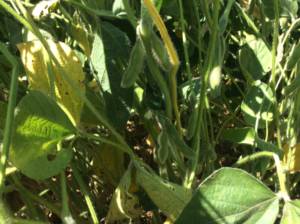 Our soybeans are still green, but as the days get shorter, we expect that they will mature quickly. I expect that they will be ready to harvest by about September 25. The soybeans have a lot of pods on them, but the lack of rain means they will likely be small.
Our soybeans are still green, but as the days get shorter, we expect that they will mature quickly. I expect that they will be ready to harvest by about September 25. The soybeans have a lot of pods on them, but the lack of rain means they will likely be small.
We allow our soybeans to dry in the field to the right moisture for storage, about 13 or 14% moisture. We don’t want to dry them like we do corn to protect soybean quality. Plus, soybeans have oil in them, making them more combustible. I have never had to dry soybeans, and I hope I never have to.
Throughout harvest, we will continue to take care of our pigs. Our production schedule has finally returned to normal, following the coronavirus disruption last spring. All our pigs are on normal feed rations and growing well. Although the pork business isn’t very profitable at the moment, it’s a relief to be back to normal.
I look forward to harvest. I usually drive a truck to haul crops from the field to our storage bins or to customers. My son Keaton runs the combine. But this year, he is also looking forward to the birth of his third child in a few weeks. I will likely run the combine for a few days when the baby arrives.
This will be the second grandchild born this year, bringing our total to four grandchildren. I enjoy growing crops and raising pigs. And I love watching our family grow.
